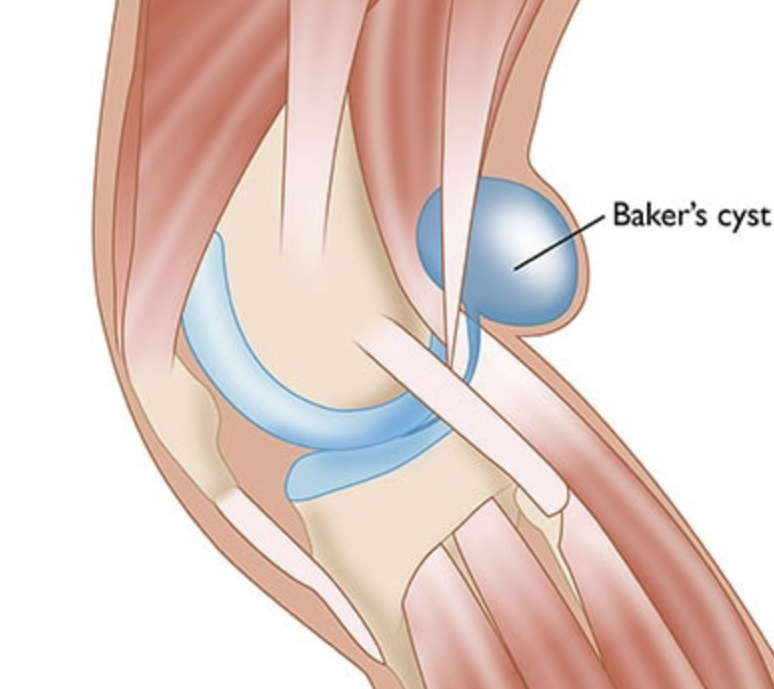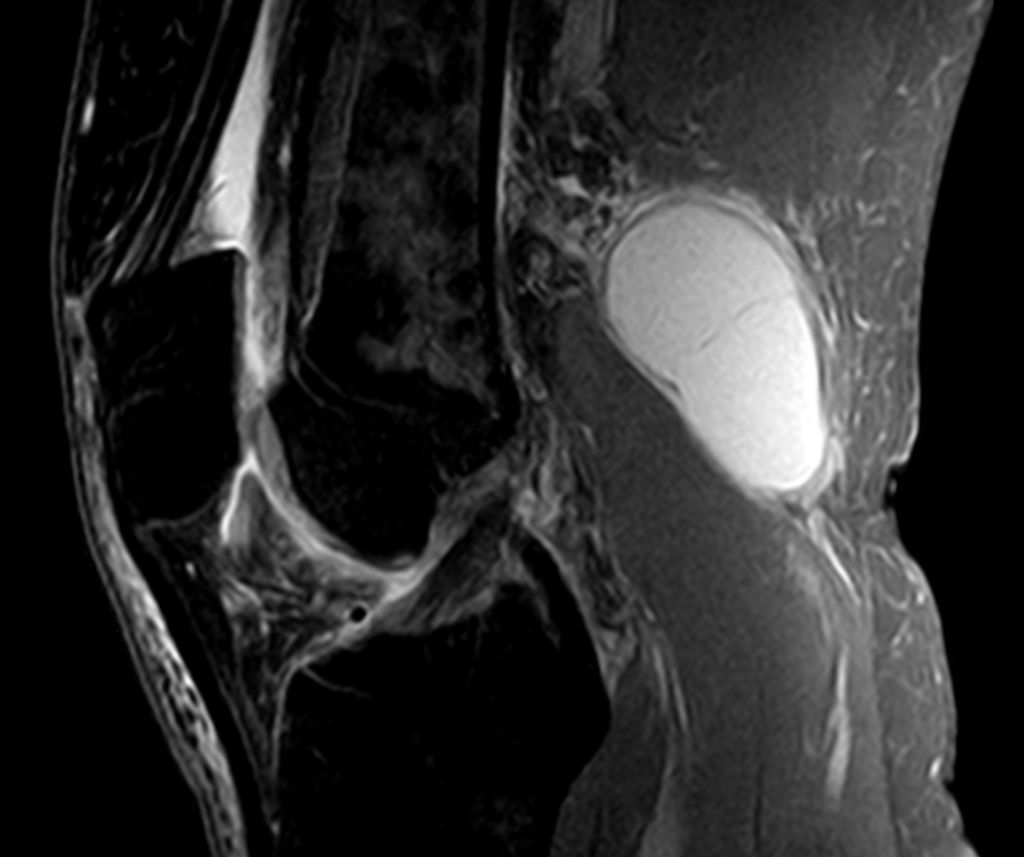- info@irosm.com
- 3333 West Commercial Blvd , Ste 101 Fort Lauderdale , Fl, 33309
(954) 751 6990
(954) 751 6990
A Baker cyst is a fluid-filled sac that forms behind the knee. It’s also known as a popliteal cyst or popliteal synovial cyst.
The knee is a complex joint that has many parts. The lower end of the thighbone (femur) rotates on the upper end of the shinbone (tibia). The knee joint is filled with a special fluid (synovial fluid) that cushions the joint.
A cyst forms when an injury or disease causes extra synovial fluid to leak into the extra space behind the knee.
Baker cyst are common in both adults and children. But they’re more common as a person gets older.

Injury or a knee disorder can change the normal structure of the knee joint. This can cause a cyst to form.
The synovial fluid inside the joint space may build up as a result of injury or disease. As the pressure builds up, the fluid may bulge into the back of the knee. This can cause the cyst.
You may be more likely to get a Baker cyst if you have other problems of the knee joint, such as:
Osteoarthritis of the knee
Rheumatoid arthritis of the knee
Tearing of the pads of cartilage (menisci) inside the knee
Infectious arthritis

A Baker cyst often doesn’t cause symptoms. A cyst will more often be seen on an imaging test, like MRI, done for other reasons. If you do have symptoms, they may include:
Pain in the back of the knee
Knee stiffness
Sense of swelling or fullness behind the knee, especially when you straighten your leg
A swelling behind the knee that goes away when you bend your knee
These symptoms tend to get worse when standing for a long time or being active.
If you have another problem with your knee, you might have more symptoms. For example, if you have osteoarthritis, you may also have joint pain. Complications of a Baker cyst can cause additional symptoms, such as warmth, redness, or numbness.
Your healthcare provider will ask you about your medical history and your symptoms. They will give you a physical exam, which will include a careful exam of your knee. It’s important to make sure your symptoms are caused by a Baker cyst and not a tumor or a blood clot.
If the cause of your symptoms isn’t clear, you may have imaging tests, such as:
Ultrasound, to view the cyst in more detail
X-ray, to get more information about the bones of the joint
MRI, if the diagnosis is still unclear after ultrasound or your provider is considering surgery
You likely won’t need any treatment if you don’t have any symptoms from your Baker cyst. Some Baker cysts go away without any treatment. If your cyst starts causing symptoms, you might need treatment at that time.
If you do have symptoms, you may be treated depending on the cause of your cyst. For example, you may need medicine for rheumatoid arthritis. Or you may need physical therapy for osteoarthritis.
Other treatments for a Baker cyst can include:
Over-the-counter pain medicines
Arthrocentesis to removes excess fluid from the joint space
Steroid injection into the joint to reduce cyst size
Surgery to remove the cyst
Most Baker cysts go away without surgery. Healthcare providers only rarely advise surgery. You might need surgery if your Baker cyst is causing you severe symptoms and no other treatments have worked. Your provider will check you carefully for other knee problems to treat before advising surgery. In many cases, a Baker cyst will come back after surgery. This is most often true when it’s caused by a problem that hasn’t gone away.
In rare cases, a Baker cyst may cause complications. The cyst may enlarge, which may cause redness and swelling. The cyst may also rupture, causing warmth, redness, and pain in your calf.
The symptoms may be the same as a blood clot in the veins of the legs. Your healthcare provider may need imaging tests of your leg to make sure you don’t have a clot. Rupture can also lead to its own complications, such as:
Trapping of a tibial nerve. This causes calf pain and numbness behind the leg. It can be treated with arthrocentesis and steroid injections.
Blockage of the popliteal artery. This causes pain and lack of blood flow to the leg. It can also be treated with arthrocentesis and steroid injections.
Compartment syndrome. This causes intense pain and problems moving the foot or toes. Compartment syndrome is a medical emergency. It needs immediate surgery. It can lead to permanent muscle damage if not treated right away.
A Baker cyst is a fluid-filled sac that forms behind the knee. They usually don’t cause major problems.
A Baker cyst is usually the result of some other problem with the knee. It may be caused by osteoarthritis or a tear of the knee’s cartilage.
Many people with Baker cysts don’t have any symptoms. You might have some pain behind the knee.
Your healthcare provider will try to treat any underlying conditions. You may also need fluid removed from the knee joint space or the cyst.
Surgery isn’t usually needed for a Baker cyst.
In rare cases, a Baker cyst can rupture. This can cause serious complications. See your provider right away if your leg is red and swollen.
